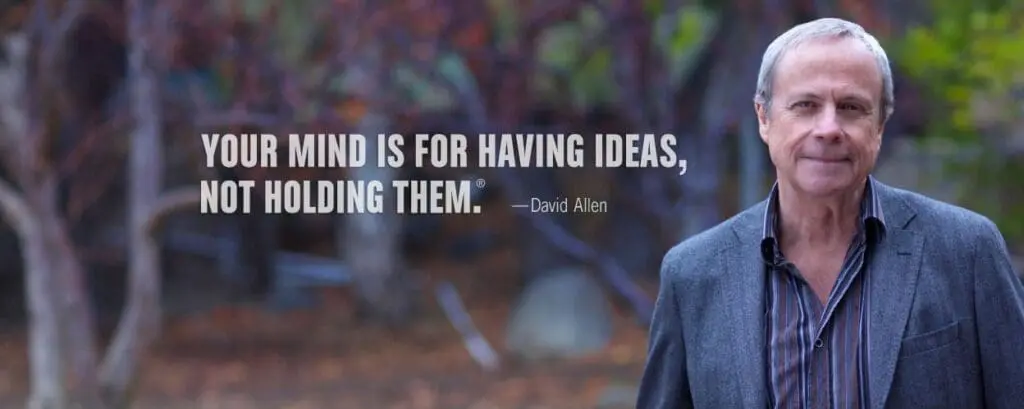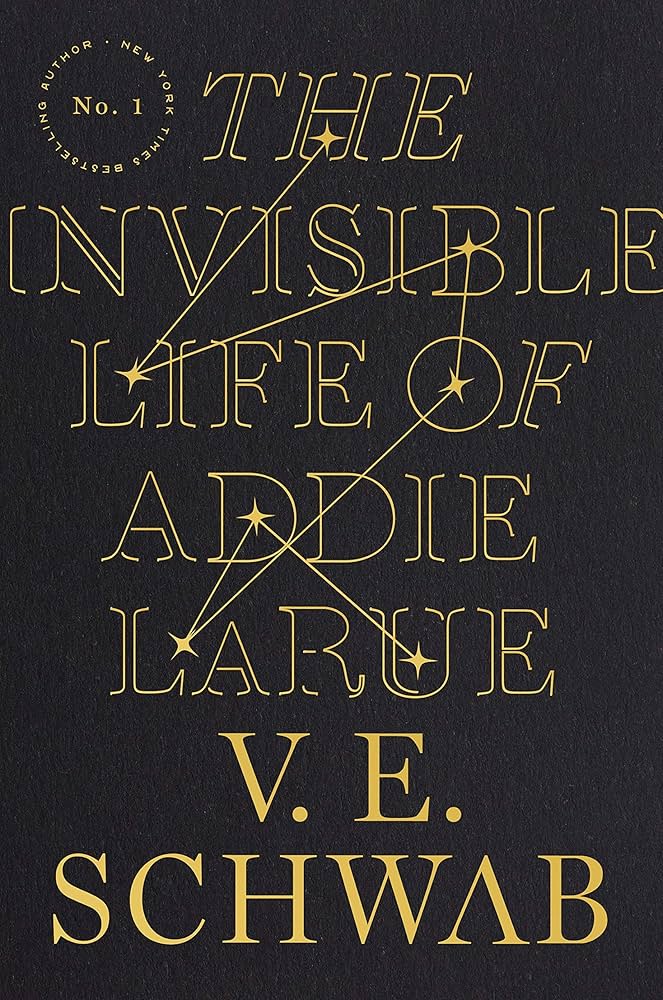Contents
Why Getting Things Done Matters Now
In 2025, David Allen’s Getting Things Done feels prophetic. The book addresses the transformation of work itself – Allen observes: “Most of us have, in the past seventy-two hours, received more change-producing, project-creating, and priority-shifting inputs than our parents did in a month, maybe even in a year.” This truly captures our current digital overwhelm reality.
The book bridges business productivity with psychological well-being in ways that many GTD practitioners worldwide have discovered to be transformative. Developed by David Allen after decades of consulting with Fortune 500 companies, this productivity methodology offers more than task management – it promises genuine stress-free productivity through systematic workflow control.
Author Check

Allen’s unconventional background, from philosophy student to martial arts expert to productivity consultant, creates unique perspectives missing from typical business authors. The David Allen Company has trained thousands of professionals, while GTD Connect continues expanding his methodology globally.
David Allen cites cognitive science research, particularly around mental space and decision fatigue, lending scientific credibility to his personal productivity claims. His martial arts background particularly influences his “mind like water” concept – achieving calm responsiveness to whatever needs to get done.
Core Concepts Breakdown
Big Idea 1: Capture Everything Into a Trusted System
Allen’s foundational principle involves getting all tasks and ideas out of your head into what he calls a trusted system. As he explains: “Your mind is for having ideas, not holding them.” The concept works because, as he notes, something on your mind creates psychological pressure even when you can’t act on it.

This method for capturing transforms how readers think about memory. Allen’s insight that the brain keeps “reminding you of things when you can’t do anything about them” makes readers rethink the relationship between thinking and remembering. When you’ve captured everything systematically, your brain can finally focus on the tasks that truly matter without background mental noise.
Big Idea 2: The Two-Minute Rule and Next Actions Thinking
Perhaps the most famous element of the GTD process, Allen’s two-minute rule states that anything taking less than two minutes should be done immediately. He explains: “Things rarely get stuck because of lack of time. They get stuck because what doing would look like, and where it happens, hasn’t been decided.”

Allen’s emphasis on defining specific “next actions” rather than abstract project list items eliminates procrastination at its source. This specificity ensures nothing falls through the cracks while creating immediate clarity about what requires more than one step to complete.
Big Idea 3: The Weekly Review as System Maintenance
The book positions the weekly review as the “critical success factor” for maintaining any productivity system. Allen recommends dedicating two hours weekly to “get clear, get current, and get creative” – ensuring your GTD system remains trustworthy. Allen notes: “Most people feel best about their work the week before their vacation, but it’s not because of the vacation itself. What do you do the last week before you leave on a big trip? You clean up, close up, clarify, and renegotiate all your agreements with yourself and others. I just suggest that you do this weekly instead of yearly.”

What Sets Getting Things Done Apart from Other Productivity Books
Allen’s bottom-up approach distinguishes GTD from typical productivity literature. Rather than starting with life goals, Allen insists on mastering daily workflow first. The SuperSummary analysis notes this creates “empowerment” because “taking complete control of work at ground level eventually gives individuals the confidence to think more creatively about their higher horizons.”

The book’s three-part structure proves masterful.
- Part 1 establishes psychological foundations around open loops, stress, and well-being.
- Part 2 provides a detailed implementation of the five steps (Capture, Clarify, Organize, Reflect, Engage).
- Part 3 explores deeper benefits, including what Allen calls achieving mind like water – the ultimate GTD goal.
Allen’s integration of front-end thinking with practical systems creates something approaching philosophy. The book argues that most stress comes from “back-end” crisis management rather than thoughtful preparation. This concept of getting things done through advanced planning rather than reactive scrambling proves psychologically liberating.
Strengths
The book’s greatest strength lies in its comprehensive methodology. Allen doesn’t offer tips – he provides a complete life organizational system that scales from daily actionable items to life-changing projects. His getting things done system includes everything from email inbox management to project planning.
Allen explains to readers in detail why open loops create stress, as he defines them: “Anything that does not belong where it is, the way it is, is an ‘open loop,’ which will be pulling on your attention if it’s not appropriately managed” – providing scientific backing often missing from productivity literature.
The detailed implementation guidance sets this apart from theoretical approaches. Allen provides specific advice on everything from folder organization to delegate protocols. The book includes extensive “trigger lists” for comprehensive mind sweeps, making it both an inspiration and an instruction manual.
Areas for Improvement
The book’s comprehensiveness occasionally overwhelms newcomers. Allen’s GTD method requires significant setup time that might discourage casual readers seeking quick productivity fixes. The system demands discipline that not everyone can maintain long-term.
Some examples feel dated despite 2015 revision efforts. While Allen supports digital integration, his original paper-based examples sometimes clash with modern workflow realities. However, the principles adapt beautifully to digital tools like Todoist (Task Management App), Fantastical (Calendar App), and Reflect (Note Taking App), which I personally use and that mirror Allen’s organizational categories.
The corporate consulting origins occasionally show through language that favors office workers. While the methodology applies universally, presentation could better serve diverse audiences seeking personal productivity beyond traditional business contexts.
Who Should Read This Book
Essential reading for:
- Knowledge workers managing multiple projects who feel overwhelmed by competing priorities
- Anyone whose current to-do list approach leaves things falling through the cracks
- Professionals seeking systematic approaches to organize their tasks and achieve stress-free productivity
- People who are ready for anything that life demands through systematic preparation
Probably skip if:
- You prefer minimal, intuitive organizational approaches over systematic methodology
- You’re satisfied with your current productivity system and don’t need a comprehensive change
- You’re looking for quick fixes rather than investing in systematic workflow transformation
Final Verdict

Getting Things Done delivers on its promise of stress-free productivity through systematic workflow management. David Allen has crafted something remarkable: a productivity methodology grounded in solid psychology that works when implemented fully. The book transforms scattered overwhelm into organized calm through proven principles that respect how our minds actually function.
While the GTD system requires significant upfront investment, the psychological benefits extend far beyond mere task management. Allen’s integration of practical technique with philosophical insight creates a complete approach to personal productivity that has helped millions achieve relaxed control over their commitments.
Worth your time? Absolutely – for anyone serious about transforming how they manage things they want to accomplish and eliminate the stress of things on their mind.
Quotable Moments
“Your mind is for having ideas, not for holding them.”
“There is no reason to ever have the same thought twice, unless you like having that thought.”
“Your ability to generate power is directly proportional to your ability to relax.”
Bottom Line
Getting Things Done stands as the definitive guide to personal productivity for the present information age. Allen’s masterful blend of practical methodology with proven psychological insights creates a productivity system that genuinely delivers stress-free productivity. For anyone drowning in modern life’s complexity, Allen offers more than hope – he provides a proven workflow for achieving relaxed control over life’s demands.

The book’s opening promise that “It’s possible for a person to have an overwhelming number of things to do and still function productively with a clear head and a positive sense of relaxed control” isn’t marketing hyperbole – it’s an achievable reality through Allen’s systematic approach to getting things done.
Connect and Discuss
- Have you tried implementing Allen’s GTD method in your own workflow?
- What aspects of his productivity methodology resonated most with your experience?
- Share your GTD journey below.







